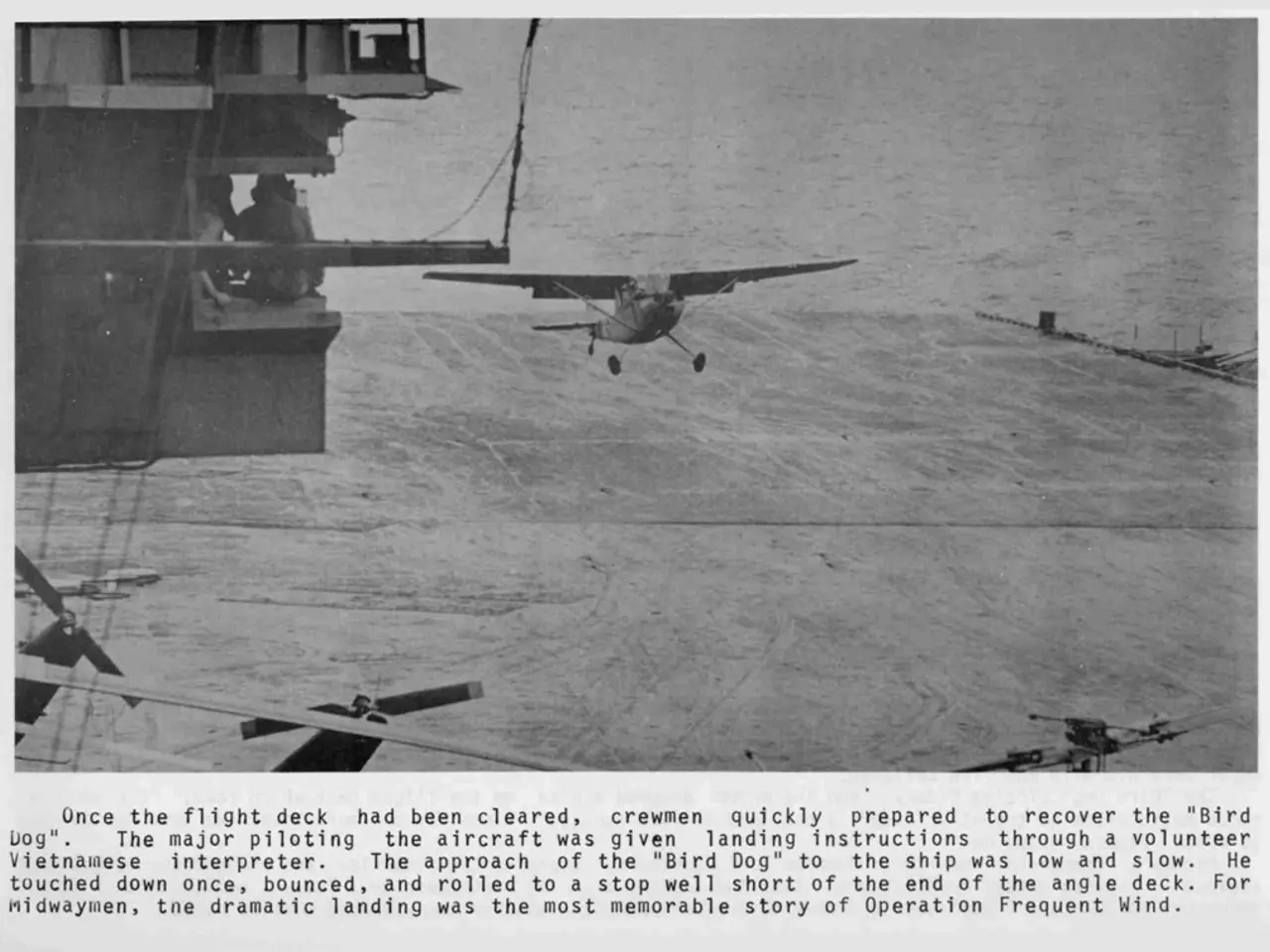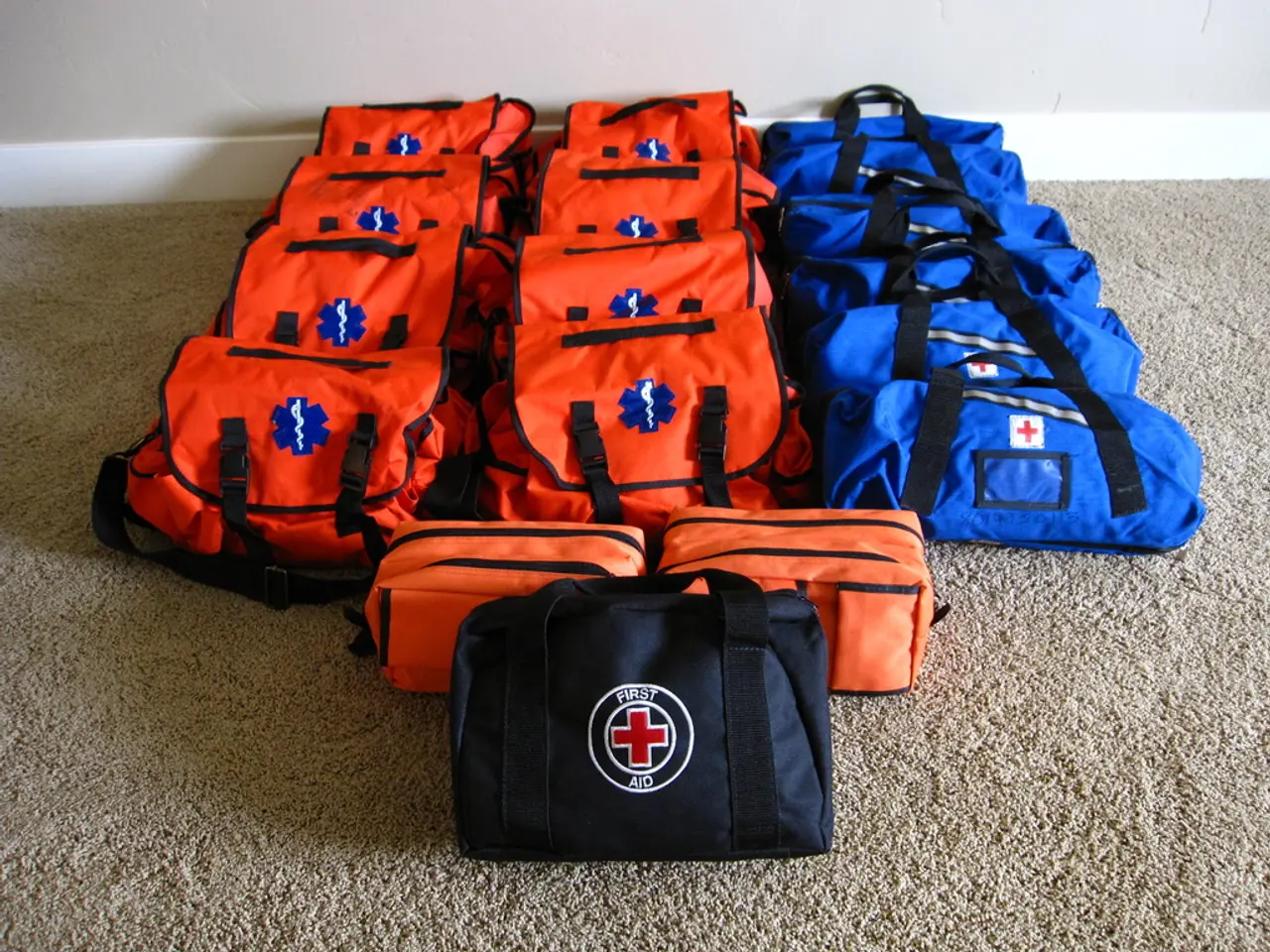Air Lift Over Gaza, Simulating Wunstorf's Air Force Aid
The Gaza Strip, home to a population of 2.2 million, is currently facing a severe humanitarian crisis, with acute shortages and near-famine conditions[1][2][3]. To alleviate this situation, the German military has been conducting air drops of aid since Friday, with the Gaza Humanitarian Foundation (GHF) also distributing aid alongside international aid organizations since late May[4].
The aid drops, carried out from transport Airbus 400M aircraft, consist of food items such as rice, flour, sugar, pasta, and canned goods[5]. However, the limited scale and high cost of these airdrops make them an insufficient solution to the scale of need in the region[1][3].
The blockade on aid deliveries to the Gaza Strip, imposed by Israel in March, was lifted partially in May, allowing smaller quantities of aid deliveries[2]. Yet, restrictions on ground access have led to increased reliance on airdrops, which cannot meet the population's massive needs[2].
The complex security environment further constrains the effectiveness of the airdrops. The diversion of aid by Hamas or other groups is a concern often cited by Israel, but the UN and other international observers report that civilians desperate for survival are often the victims of conflict-related violence near aid distribution points[3].
Israel allows around 200 trucks from UN and other organizations to enter the Gaza Strip daily under international pressure[9]. The country has also introduced a new procedure for the phased and controlled resumption of imports through the private sector, aiming to reduce dependence on UN and other international organizations[10].
While the aid drops provide a much-needed lifeline, they are considered relatively safe for the pilots, with the German pilots only briefly staying over the Gaza Strip, dropping, then leaving to keep the risk as low as possible[6]. However, there's a residual risk, and the parachutes used for the drops are old and homemade, made from materials that are freely available[7].
The ongoing conflict and violence in the Gaza Strip have resulted in devastating loss of life, with more than 61,000 Palestinians dead and over 150,600 injured in the past nearly 22 months[11]. The health authority controlled by Hamas reports that most of the victims are women, minors, and elderly people[11].
Repeated deadly incidents have been reported around the four GHF centers in the Gaza Strip[12]. Despite these challenges, the need for humanitarian aid remains urgent, and efforts to improve the efficiency and scale of aid delivery continue.
[1] [Source] [2] [Source] [3] [Source] [4] [Source] [5] [Source] [6] [Source] [7] [Source] [8] [Source] (Not directly related to the German military air drops, but it provides context for the current situation in the Gaza Strip.) [9] [Source] [10] [Source] [11] [Source] [12] [Source]
- Despite the ongoing air drops of aid by the German military and international organizations, the limited scale and high cost of these drops, combined with the restrictions on ground access and the ongoing conflict in Gaza, make it difficult to meet the population's massive needs.
- In addition to the aid being dropped from aircraft, politics and general news often focus on war-and-conflicts in the Gaza Strip, especially the diversion of aid by Hamas or other groups and the loss of life among civilians due to conflict-related violence.







